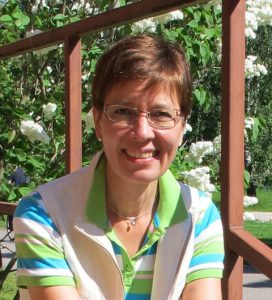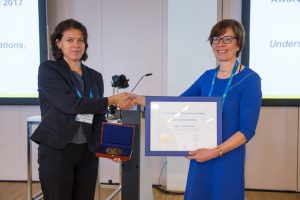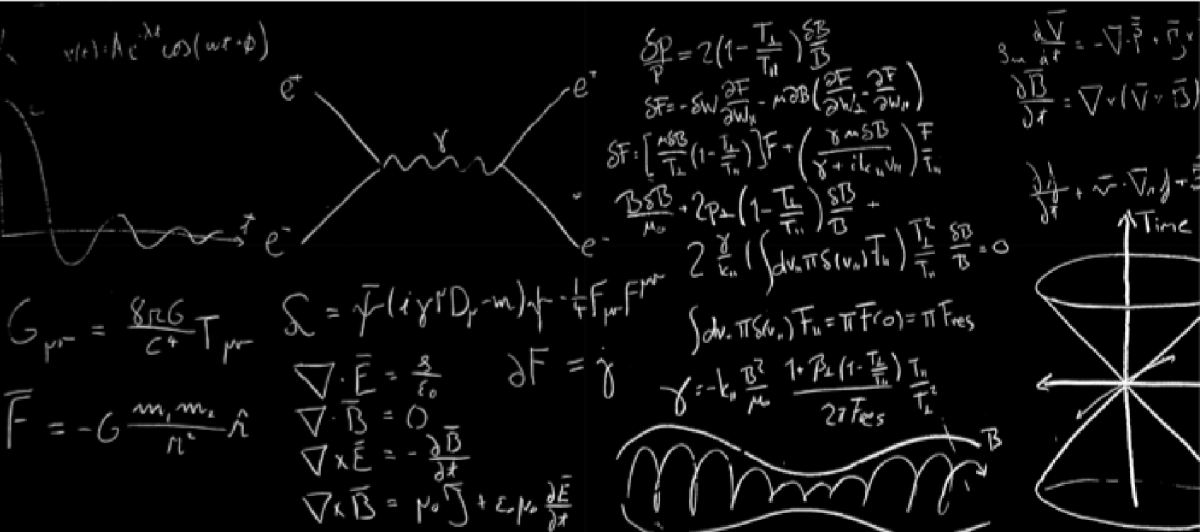Teksti: Eleanna Asvestari
Auroras have sparkled our interest for centuries. Apart from dressing the night sky with a colourful dancing cloak they are of great interest in understanding the processes that take place in the magnetosphere and ionosphere, and are key in understanding the Sun-Earth relations. Tuija Pulkkinen is a distinguished researcher in the field. Professor at the Department of Electronics and Nanoengineering, and Vice President of Research and Innovations Services at Aalto University, Tuija counts over three decades of active scientific career. Through her research she aims at answering the most intricate questions of the field of space physics. How does the energy come in from the solar wind to the ionosphere, through the magnetopause; and how much of the incoming energy affects the space environment and the magnetosphere?

Space Physics then and now
Tuija started her research career studying auroral images aiming to understand the auroral processes and how they relate to processes in the magnetosphere. Her research later expanded to what is happening on the Sun, and how that relates to the Earth’s environment and the processes that take place in between. Nowadays, her scientific interests focus on data analysis of spacecraft measurements, as well as empirical modelling and magnetohydrodynamic simulations of magnetosphere – ionosphere coupling.
In time, she has seen her field of research evolving. At the beginning it was all about exploratory basic physics, but then satellites became instruments operated for many different purposes, which led to emerging of a new applied research field examining the effects the solar dynamics has on technological systems. The new concepts were not anymore restricted to basic exploration of space, but also on how to survive in space and how to find solutions to practical problems related to that. A new issue also emerged, that of the space debris, which we have yet to resolve.
Despite all the progress in the fields of magnetospheric and ionospheric physics, as Tuija explains, there are basic plasma physics questions that remain unanswered; such as the diffusive behaviour of the very collisionless plasma, and the fact that magnetohydrodynamics work in space when – in fact – it should not. Thinking beyond these scientific fields, Tuija also points out that we are still seeking answers to how typical our solar system is comparing to others found in the far space, and whether life exists beyond our neighbourhood. The presence of auroras imply that a planet has a magnetosphere and an atmosphere shielding it from outer space. Thus, auroras could be used as tracers of life, and Tuija believes that observing them in planets of other solar systems can be an indicator of life.
When it comes to future expectations, Tuija emphasises that we have several ways to improve observations, with one large satellite with comprehensive instrumentation or multiple probes that will study how plasmas behave both in small and large scales. It is important, as she stresses, to cover multiple scales in order to understand the plasma dynamics, important not only in our magnetosphere and solar system, but also other planetary systems.
The journey to personal and scientific success
Tuija liked natural sciences already since school but at that time she did not think of it as a potential career. When deciding what to study as her Bachelor’s degree she found herself with two options, either natural sciences or Finnish language, and ended up pursuing her degree in science. In the spring of getting her master’s degree, Finland joined the European Space Agency (ESA), an action followed by a call for PhD candidates. These series of events opened many opportunities during the first year of her PhD degree, which included building lots of instrumentation and having financial support to do research. However not everything was easy. Since the knowledge and the science on the field were new there was no course yet developed and there was little guidance due to lack of experts at that time. Tuija then took a major step and completed part of her PhD at Goddard Space Flight Center in the USA, where she met many colleagues with whom she has been collaborating with since.

One can say that Tuija has travelled the world for science. After finalising her studies she got the title of Docent in Space Physics at the University of Helsinki in 1995. She also worked at the Finnish Meteorological Institute (FMI) since 1988, where she became a research Professor in 2000 and head of the unit from 2003 until 2010. During the period of 1996 – 1997 she was a visiting scientist in Boulder at the University of Colorado and then visiting Professor for one year at the Los Alamos National Laboratory during 2005 – 2006. She also made shorter scientific visits here and there that helped boost her career. Since 2011 she has been working at Aalto University, where at first, she had duties of Dean of the School of Electrical Engineering until 2014 and has been Vice Rector of Research and Innovation (2014- ) and Professor of Space Science and Technology (2013-) since. “First and foremost, no matter where you go it is important to go, to see how other people do science and what combination of fields exist. When you see an opportunity take it, it is an important element for success”, Tuija says, a great advice for young upcoming scientists.
Achievements, challenges and gratification
When asked what are her greatest achievements Tuija instantly says, “being able to help other peoples’ careers”. She takes personal pride for Associate Professor Emilia Kilpua and Professor Minna Palmroth for working with them since their early career stages and being part of their progress. She does not take credit for their success but feels happy she has been there to witness it. She also feels very proud for building the research group at FMI and contributed to its expertise, and later on for taking part in the science group at Aalto University that has become known for small satellite projects.
But becoming a distinct scientists and leader of a research group does not come unchallenged. Having enough time and properly prioritising though tasks and responsibilities has always been challenging. An obstacle often encountered is splitting time between personal scientific projects and getting involved in the community work. This felt like a conflict of interest never to be resolved. Not to forget that with travelling being an integral part of a scientific career, having a family willing to follow you around the world, is important and challenging at the same time. Luckily for Tuija this worked well and as she says, having her family with her made things easy and strengthened their ties. A challenge of the present, as Tuija points out, is that everybody is much more busy now and there is an increasing pressure of getting results, as she admits. This is partially good for boosting one’s career but also harmful as it leaves less time for the brain to rest and develop new ideas. Seeking balance between the two is an ongoing issue.
For Tuija, space physics is a nice field to work in and the opportunity that it offers to combine observations and theoretical modelling was a major influencer in her career choice. She also enjoyed the opportunity to always be pushing things beyond the limits of present capabilities, and by doing that her motivation to do science grew. However, as Tuija notes one should not ignore the great influence that meeting interesting people can have on one’s career choices. It is the great leaders and scientists she met – like Risto Pellinen and Hannu Koskinen, and also all scientists she met in the institutes she has worked and visited around the world, that had a positive influence to her career.
Some thoughts on how science has changed today
Of course, science today is not the same as when Tuija started her career. A development of science which she likes is the practical aspect of science that brings us closer to society. Although, people were always interested in space and auroras, now there is a need to know about space for survival purposes. “We do not just need to understand the physical phenomena but we also need to predict their changes, we need to forecast.” This had an impact on how we do science today. Moreover, to be a good scientist today you have to have good understanding of a much wider field. Space science is part of the much bigger field of Earth science, and today we focus on how the Sun affects the Earth and what are the principles that govern the coupled system. Therefore, to properly explain your own discipline you need to look to other disciplines within the field.
Advice to young scientists
Tuija would advise the young scientists who want to follow that career path to do different things, seek new problems, new people to work with. Changing places constantly and studying different things will always open new opportunities. More importantly be curious.
Beyond science for science
Tuija points out that one thing that is on today’s political discussions is that the physics field still lacks gender balance. Notable efforts are made to involve women already from kindergarden, but it is still necessary to have a more conscious effort for this to succeed.
